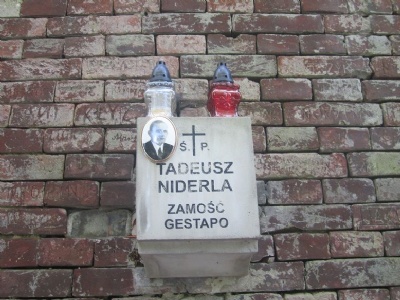Zamosc Rotunda
In June 1940, Gestapo in Zamosc took over a nineteenth-century fort called Rotunda. The fort was just outside Zamosc, surrounded by high walls and close to a railway junction making it ideal for transporting Poles back and forth from nearby areas. The Poles brought to the fort fell under Aktion AB (Ausserordentliche Befriedungsaktion) which aimed to eliminate the Polish intelligentsia. At the fort, the prisoners were interrogated (not infrequently tortured), imprisoned, and from 1943 the Gestapo also began murdering prisoners. The bodies were later buried outside the fort’s walls and starting in November 1943, the Nazis began to open the mass graves and cremate the bodies. The fort also served as a transit camp for prisoners who for various reasons would be deported to other prisons and concentration camps . Until 22 July, 1944, when the fort was abandoned, between 6,000 – 8,000 people had been murdered.
Current status: Preserved with museum (2013).
Address: Meczenników Rotundy, 22-400 Zamosc.
Get there: Car.
Follow up in books: Höhne, Heinz: The Order of the Death’s Head: The story of Hitler’s SS (1969).






Given that the Lublin district (in which Zamosc was located) planned to be germanized, district leader, SS officer, Odilo Globocnik, and also Himmler’s subordinate, suggested that Zamosc be renamed Himmlerstadt. Himmler was flattered by the proposal, but declined on the grounds that not even Hitler had allowed any city to bear his name. Zamosc was instead named Pflugstadt.